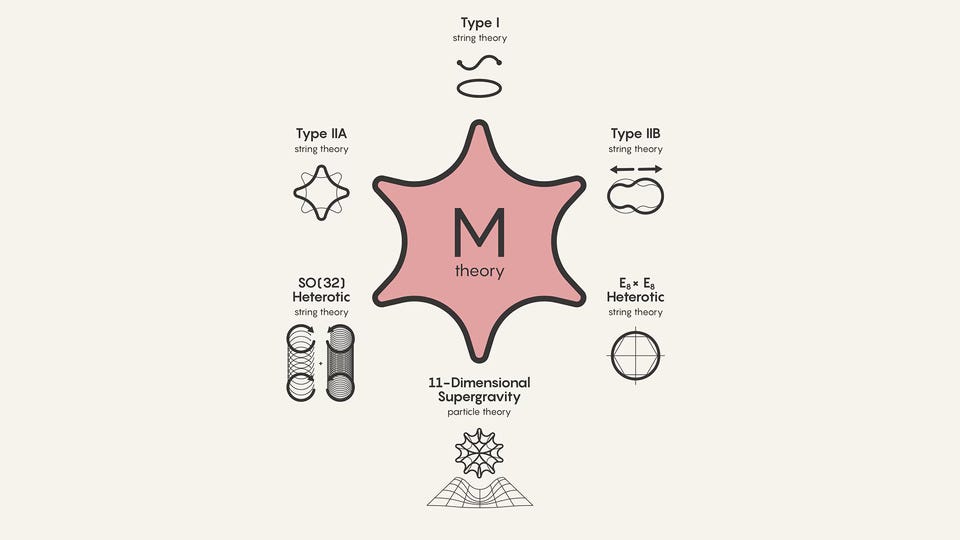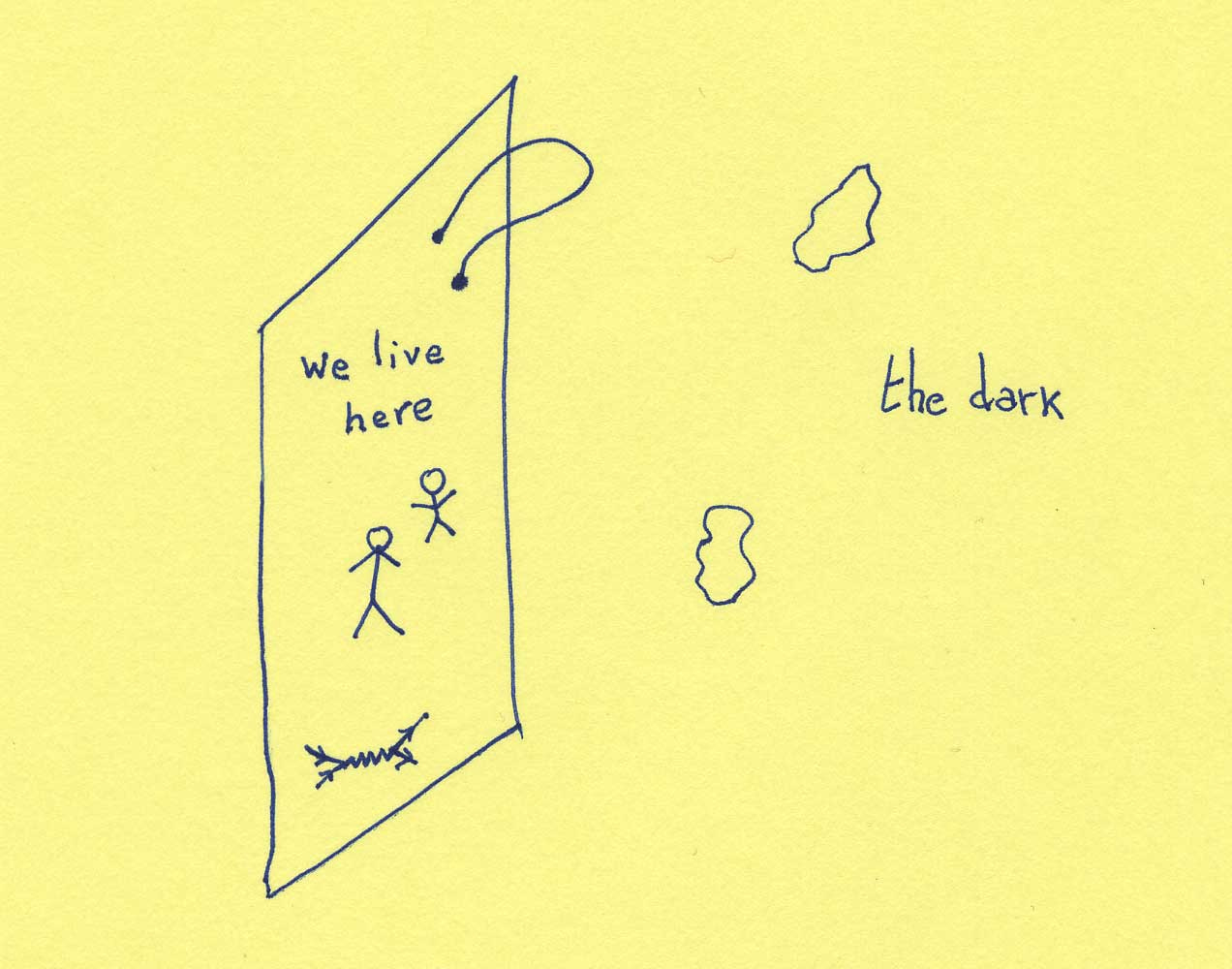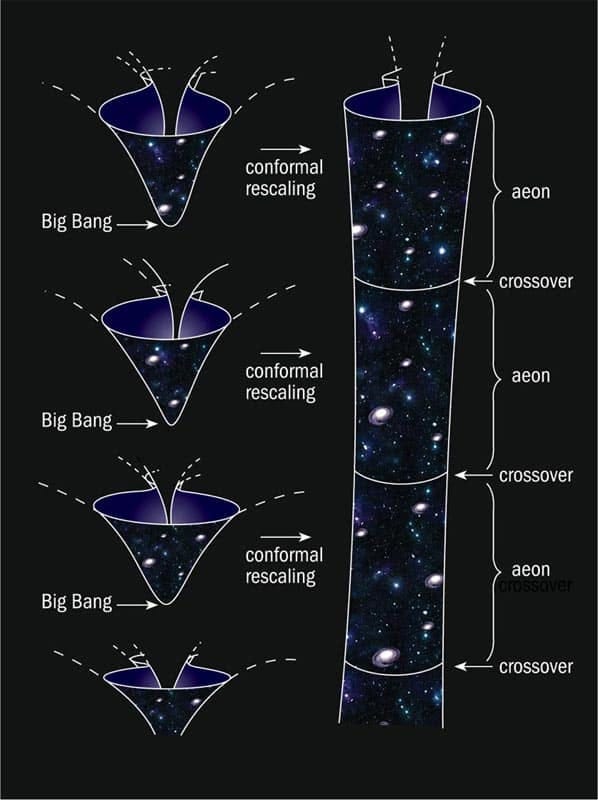It's terrifying when you consider that every thought we have, every choice we could possibly make, branches off into a new world.
— Blake Crouch, Dark Matter
Greetings, Fellow Bohron
In the article on Higher Dimensions, I told you that string theory can work only if we consider ten dimensions: three spatial dimensions, one temporal dimension and six more compact dimensions that are curled up at microscopic scales. Let’s continue down the same road and see what more bizarre features the theory exhibits.

It must be noted that the mathematics of string theory is exceedingly difficult to comprehend for an average undergraduate like me and involves a rigorous understanding of Group Theory. So I take a lot of mathematics for granted here and attempt to present only the physical picture of what string theory has to offer.
Transition from String Theory to M-Theory: The Eleventh Dimension
There are five forms of string theories: Type 1, Type IIA, Type IIB, SO(32) Heterotic, and E₈ x E₈ Heterotic. The distinction is based on what class of strings these theories describe: open, closed or both. Each has some properties that describe the physical reality of our universe.

Whenever physicists talk about the Theory of Everything (ToE), they consider it unique; one framework that describes all forces of nature. If string theory is a candidate for ToE, why does it have five different forms?
In 1994, Edward Witten of Princeton's Institute for Advanced Study and Paul Townsend of Cambridge University speculated that all five string theories were in fact the same theory but only if we considered an eleventh dimension. String Theory was unique, but only if we could discover this eleventh dimension.
Significance of the eleventh dimension: Branes
The cyclic cosmological model says that our universe has been through infinite cycles of expansion and contraction and will continue to do so. The cyclic model posits that our universe consists of 11 dimensions, only four of which can be observed (three spatial and one temporal). In the eleventh dimension, a new mathematical object can exist, called the membrane. Our four-dimensional part of the universe is called a membrane (brane, in short).
Brane is a physical object that generalizes the notion of a point particle to higher dimensions. A point particle is zero dimensional brane or 0-brane, string is a one dimensional brane or 1-brane and so on.
Branes are dynamic objects which can propagate through spacetime according to the rules of quantum mechanics. The surface of a sphere is an example of a membrane.

The significance of the eleventh dimension is that it considers our universe as just another brane floating in an eleven-dimensional space-time. This raises the possibility that our universe exists as a brane in a vast sea of other brane universes inside a multiverse. String theory predicts that there are trillions of possible universes compatible with relativity and quantum theory. Usually, communication between these universes is impossible.
Predictions of M-Theory
Nature of Dark Matter
The theory also tries to explain the properties of dark matter. It speculates that dark matter might be ordinary matter in a parallel universe. Another speculation is that dark matter might be an ordinary galaxy hovering above us in another membrane universe. The light from the galaxy would never reach us, so it is invisible. Still, we could feel the effect of its gravity. As it happens, this is how we generally describe dark matter.

Origin of Universe
The theory predicts that membrane universes can also collide. Some physicists believe that 13.7 billion years ago two gigantic cosmic membranes participated in a collision which we call the Big Bang. The shock waves from that collision gave birth to our universe. Michio Kaku calls it the "Big Splat" theory.
Validity of Anthropic Principle
Anthropic Principle states that the constants of nature (like nuclear force and gravitational constant) are fine-tuned very accurately to allow for the proliferation of life in our universe. Maybe God chose our universe as “the right one” for life. Sir Martin Reese of Cambridge University believes that there are also an infinite number of universes in which the constants of nature are not compatible with life.

In addition to higher dimensions and the multiverse, quantum mechanics predicts another sort of parallel universe known as the quantum universe. We would discuss it in the next article.
Sources:
Ch 13 - Parallel Universes, Physics of the Impossible, Michio Kaku
The Big Bang: What really happened at our universe's birth? - Space.com
String Theory: Five Theories - Andrew Zimmerman Jones and Daniel Robbins





